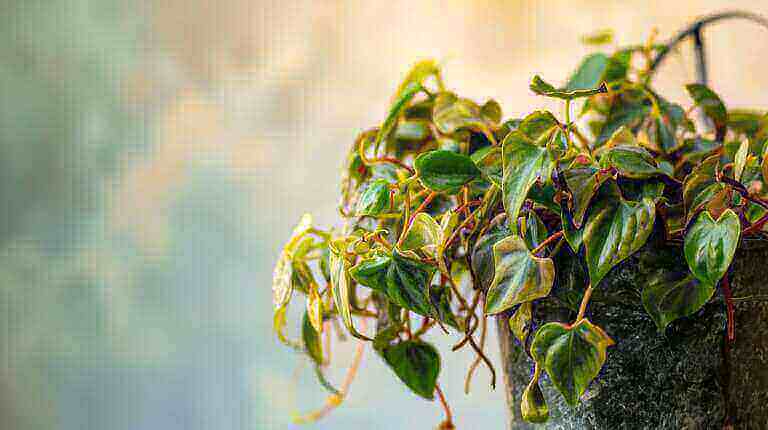Are Dieffenbachia Toxic to Dogs and Cats? Pet Safety Tips for Owners
Dieffenbachia toxicity in pets is primarily caused by insoluble calcium oxalate crystals found in these plants. When consumed, these crystals can lead to severe irritation in the mouth and gastrointestinal tract. As responsible pet owners, it is essential to recognize the signs of Dieffenbachia toxicity and take the necessary precautions to keep our furry friends safe.
Key Takeaways:
- Dumb cane plant can be toxic to cats and dogs due to insoluble calcium oxalate crystals.
- Symptoms of Dumb Cane toxicity in pets include drooling, pawing at the mouth, vomiting, and swelling of the upper respiratory tract.
- Although Dumb Cane poisoning is usually not severe, it is important to seek veterinary treatment for pain relief and protection of the esophagus and stomach lining.
- Prevent accidental ingestion by keeping Dumb Cane plants out of reach of pets.
- Be aware of other poisonous plants that may be present in your home and take appropriate precautions.
Signs of Dieffenbachia Toxicity in Dogs and Cats
Dogs and cats that consume Dumb Cane plants may exhibit signs of toxicity. These signs include excessive drooling, lip-smacking, avoidance of food and water, pawing at the mouth, vomiting, and in rare cases, swelling of the upper respiratory tract. The insoluble calcium oxalate crystals present in Dumb Cane plants cause pain and irritation in the oral mucosa and can lead to traumatic stomatitis. These symptoms can occur within minutes of chewing on the leaves and can cause intense discomfort for the affected pet.
Recognizing Oral Mucosal Irritation
One of the key indicators of Dieffenbachia toxicity is oral mucosal irritation. Pets may exhibit behaviors such as excessive drooling, pawing at the mouth, and lip-smacking. These signs are a result of the pain and discomfort caused by the calcium oxalate crystals present in Dumb Cane plants. It’s important to observe your pet closely if you suspect they have ingested part of a Dumb Cane plant, as early intervention can help alleviate their symptoms.
Understanding Traumatic Stomatitis
Dieffenbachia toxicity can lead to a condition known as traumatic stomatitis. This is characterized by inflammation and ulceration of the oral mucosa, which can cause intense pain for pets. The symptoms of traumatic stomatitis range from drooling and difficulty eating to reluctance to open their mouth. If you notice these signs in your dog or cat, it is important to seek veterinary care for proper evaluation and treatment.
Immediate Veterinary Attention
If you suspect that your pet has consumed Dumb Cane plants and is exhibiting signs of toxicity, it is crucial to seek immediate veterinary attention. Veterinarians can provide the necessary treatment to alleviate pain and discomfort, as well as protect the oral mucosa, esophagus, and stomach lining. Prompt intervention can help prevent further complications and ensure the well-being of your furry companion.
Treatment for Dieffenbachia Toxicity in Pets
If your pet has ingested part of a Dumb Cane plant, it is crucial to seek immediate veterinary care. Although Dieffenbachia toxicity is generally not severe, pets may still require treatment to alleviate their symptoms and ensure their well-being. Veterinary care for Dumb Cane toxicity usually involves a combination of supportive measures and medications to provide relief and promote healing.
Supportive Measures
When your pet ingests Dumb Cane plant, the first step is to remove any remaining plant material from their mouth and prevent further ingestion. It is essential to wash your pet’s mouth gently and wipe away any residue. This helps to reduce the contact of the toxic plant material with the oral mucosa and decreases the potential for further irritation.
Medication
Veterinary care for Dieffenbachia toxicity often involves the administration of medications to relieve oral ulceration and discomfort. Pain medication, such as non-steroidal anti-inflammatory drugs (NSAIDs), may be prescribed to help manage pain and reduce inflammation. These medications can provide relief and enhance the healing process.
Preventing Future Incidents
While treating Dieffenbachia toxicity is essential, it is equally crucial to prevent future incidents. Pet owners should take precautions to keep Dumb Cane plants out of reach of their furry companions. Placing the plants in elevated areas or using barriers can help prevent accidental ingestion.
Additionally, it is important to educate yourself about other potentially toxic plants that may be present in and around your home. Being aware of plants such as philodendron, tulip, and sago palm allows you to take necessary precautions and create a safe environment for your pets.
By seeking veterinary care promptly, administering the appropriate treatment, and implementing preventative measures, you can ensure the well-being and safety of your beloved pets.
| Treatment for Dieffenbachia Toxicity in Pets |
|---|
| Supportive Measures |
| – Remove any remaining plant material from the pet’s mouth |
| – Gently wash the pet’s mouth and wipe away residue |
| – Encourage drinking water or offer ice cubes to soothe and hydrate the mouth |
| Medication |
| – Administer pain medication (non-steroidal anti-inflammatory drugs) |
| – Prescribe gastroprotectant medication to protect the esophagus and stomach lining |
| Preventing Future Incidents |
| – Keep Dumb Cane plants out of reach of pets |
| – Educate yourself about other toxic plants and take necessary precautions |
Precautions for Pet Owners and Other Poisonous Plants
As a pet owner, I understand the importance of keeping my furry companions safe. One way I ensure their well-being is by being aware of potentially poisonous plants in and around my home. While the Dieffenbachia plant is known for its toxicity to cats and dogs, there are other plants that can also be harmful.
To protect my pets, I make sure to keep Dieffenbachia plants out of their reach. These plants contain insoluble calcium oxalate crystals, which can cause irritation and discomfort if ingested. It’s essential to place them in areas where my pets cannot access them, such as high shelves or secured rooms.
Additionally, I’ve taken the time to research other toxic plants that may pose a risk to my furry friends. Philodendron, tulip, and sago palm are just a few examples of plants that can be hazardous if consumed by pets. By identifying these plants and taking precautions, I can create a safe environment for my pets to explore without worry.
FAQ
Is Dieffenbachia toxic to pets?
Yes, Dieffenbachia, also known as dumbcane, is toxic to both dogs and cats. If an animal bites or chews on this plant, it can release calcium oxalate crystals which cause a burning sensation in the mouth and throat, and can lead to difficulty breathing.
What are the symptoms of Dieffenbachia poisoning in pets?
Symptoms of Dieffenbachia poisoning in pets can include intense burning and irritation of the mouth, tongue, and lips, excessive drooling, vomiting, and difficulty swallowing. In rare cases, it can cause difficulty breathing. If you notice these symptoms, contact your vet immediately.
What should I do if my pet eats a Dieffenbachia plant?
If your pet eats a Dieffenbachia plant, it’s important to contact your vet or a poison control center immediately. They can provide advice on how to ease the symptoms and may advise you to bring your pet in for treatment.
What is the common name for Dieffenbachia?
The common name for Dieffenbachia is Dumb Cane. There are several species of Dieffenbachia, one of the most common being Dieffenbachia seguine, also known as the Spotted Dumb Cane.
How can I keep my pets safe from Dieffenbachia at home?
To keep your pets safe from Dieffenbachia at home, it’s best to keep the plant out of reach, such as on a high shelf or in a room that your pets do not have access to. It’s also a good idea to educate yourself about other common houseplants that are toxic to pets.
Can Dieffenbachia poisoning be fatal to pets?
While Dieffenbachia poisoning can be very uncomfortable and distressing for your pet, it is rarely fatal. However, if your pet has ingested a large amount of the plant, or if symptoms persist, it’s important to get them to a vet as soon as possible.
What should I do if my pet has bitten a Dieffenbachia plant?
If your pet has bitten a Dieffenbachia plant, it’s important to remove any plant material from their mouth and rinse their mouth out with water. Then, contact your vet or a poison control center for further advice.







